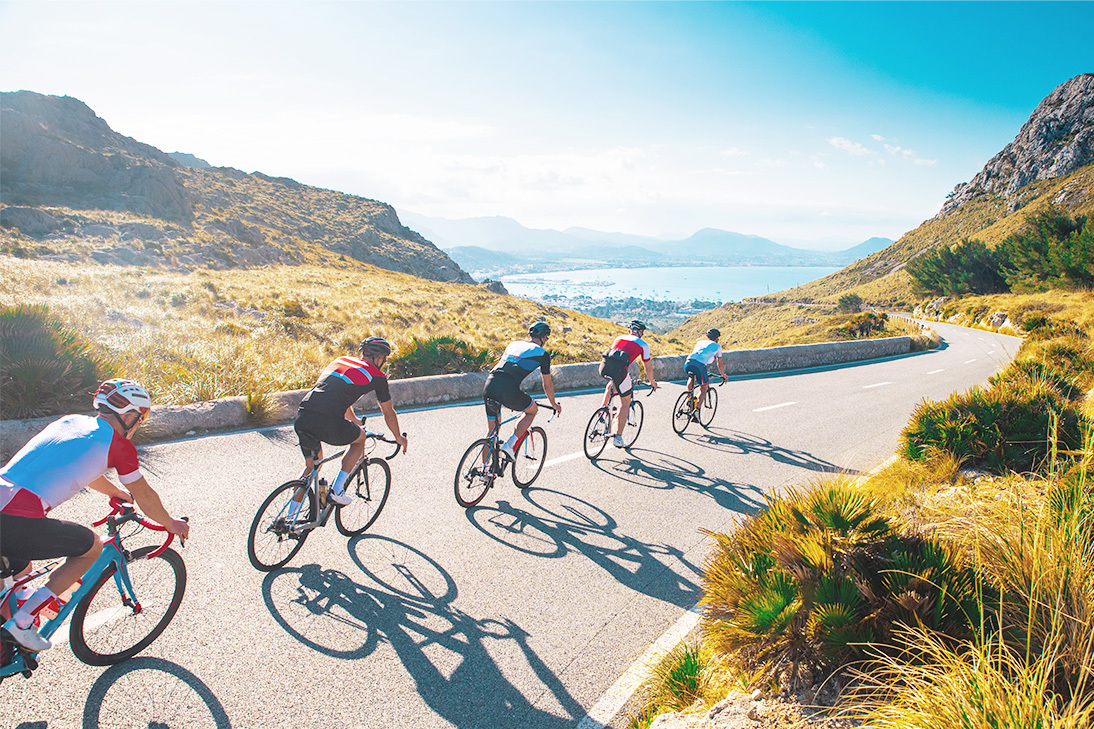The perfect cycling training plan has been sliced and diced into countless specialties. Training fundamentals for a triathlon will differ from those for a road cyclist, which differs from the ones used by an endurance mountain biker or gravel rider. That said, they’ll all mix in a variation of longer, less intense mileage with shorter, high-intensity intervals and some steady-state blocks thrown in. Within this mix, the 5-minute, high-intensity interval doesn’t appear much. That’s a shame because it gets the body ready to climb hills with more power and hold a higher speed for longer.
The 5-minute interval, also known as a VO2 max interval, draws on both aerobic and anaerobic energy systems. It’s too long to be purely anaerobic. That’s what 30-60-second all-out sprints are for. It’s also too short to be purely aerobic, that pace you can ride all day. They’re hard by design because you want to teach yourself to be comfortably uncomfortable at these max intensities. That way, you train the body (and mind) to respond. On a cellular level, you also train your body to recover from these efforts more efficiently, which allows you to prep for the next hill climb, breakaway attempt, or acceleration on your next group ride or race.
Implementing the 5-minute VO2 interval workout
These all-out intervals require a solid foundation of cycling before you attempt them. It will take several weeks of low-intensity mileage with a day or two of short sprints (30-60 seconds) each week before you see the benefits of these efforts. Generally, you want to start incorporating the 5-minute intervals into your training program 4-6 weeks before a goal event or peak season. You can also work them into your training during your peak cycling season to continue developing more speed and climbing power.
Ideally, you want to know your power and heart rate targets for these intervals. If your bike or indoor cycling trainer has a power meter, you should be able to figure out your threshold power and heart rate number. Need to determine your targets for the first time — or the first time in a while? Humango’s coaching app will guide you through a threshold power test on a cycle trainer or via your bike’s power meter and your heart rate monitor.
Once you know your numbers, Humango will prescribe your target numbers for these 5-minute interval sessions and the number of intervals to complete. Depending on your fitness level, the app could start you off with three intervals with five minutes of rest between each effort or five intervals with only two minutes between each. In practice, these sessions should be done above 105% of your threshold power, which will seem relatively easy during the first one. Remember, threshold power is the maximum effort you should be able to sustain for an hour. The real work — and growth — kicks in during the last interval or two.
As you start your stretch of 5-minute VO2 max intervals, know that your week-to-week training progression will involve more intervals and shorter recovery periods as you get stronger. This second attribute, your recovery rate, could be considered the secret sauce to all this hard work. That’s because the faster your body can process the anaerobic waste from these efforts both during the interval and after it, the longer you can sustain that pace.
Let Humango do the work
The 5-minute interval demands an out-sized amount of physical and mental effort. What you can manage in terms of your threshold power will change from week to week. The results may show a positive increase in your threshold power or they may not depending on your previous workouts and the challenges and stresses of your daily life. A poor day on the road or indoor cycling trainer may be due to a poor night’s sleep, not a sudden collapse in fitness. Or you may have joined a fast group for a ride over the weekend, which turned into a much longer and more intense day on the bike than planned.
This is where Humango’s coaching app steps in. It will monitor your evolving threshold power and heart rate numbers and prescribe a workout that will be very hard, but very doable. And if, for some reason, you don’t hit your targets, the app can adjust the next workout (or your threshold number) to meet you where your fitness is that week. This dynamic planning gives you time to recover, grow stronger, and hit those targets next time.














